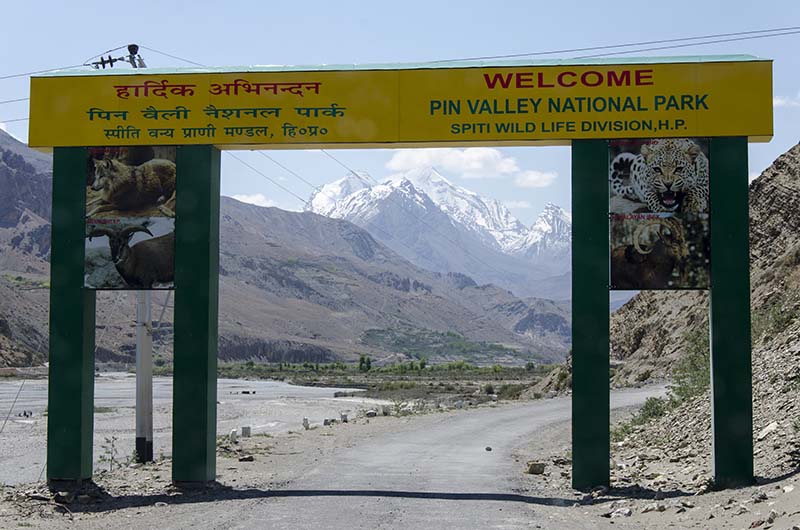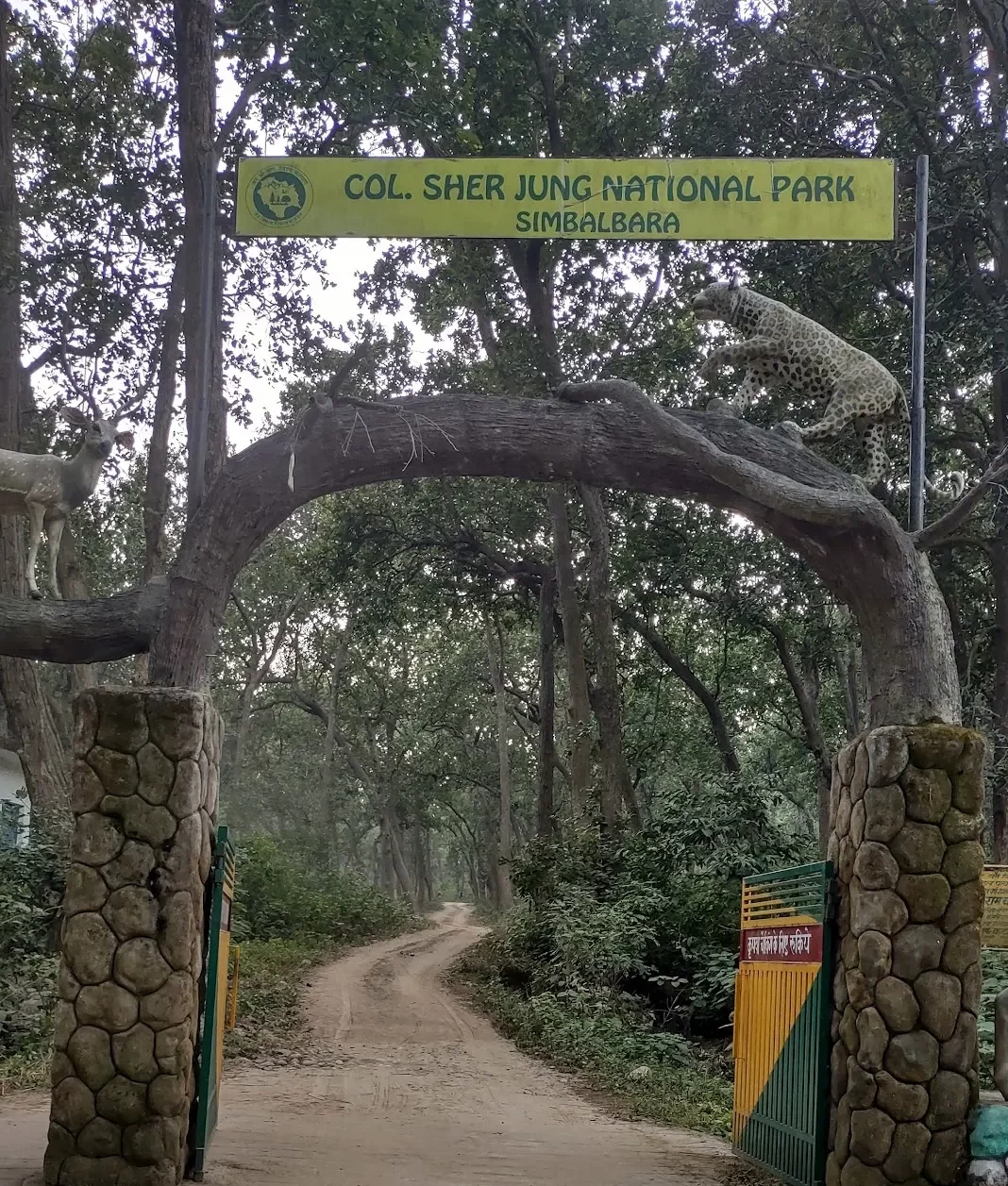National Parks In Himachal Pradesh

Also Read This: Wildlife Sanctuaries in Himachal Pradesh
National Parks In Himachal Pradesh
हिमाचल प्रदेश के राष्ट्रीय उद्यान
हिमाचल प्रदेश में वनस्पतियों और जीवों की विविधता अत्यधिक है। यहाँ के कुछ प्रमुख राष्ट्रीय उद्यान और उनकी विशेषताएँ निम्नलिखित हैं:
| क्र.सं. | राष्ट्रीय उद्यान | क्षेत्रफल (किमी²) | विशेषताएँ |
|---|---|---|---|
| 1 | ग्रेट हिमालयन नेशनल पार्क | 1,171 | हाल ही में यूनेस्को द्वारा विश्व धरोहर स्थल घोषित किया गया है। यह पार्क उच्च पर्वतीय पारिस्थितिक तंत्र का प्रतिनिधित्व करता है और इसमें विभिन्न प्रकार के पौधों और जीवों की प्रजातियाँ पाई जाती हैं। |
| 2 | पिन वैली नेशनल पार्क | 675 | यह पार्क विशेष रूप से अपने समृद्ध वनस्पति और जीवों के लिए जाना जाता है। इसमें बर्फीले क्षेत्र और घास के मैदान शामिल हैं। |
| 3 | खीरगंगा नेशनल पार्क | 705 | यह पार्क प्राकृतिक गर्म पानी के स्रोतों और सुरम्य पहाड़ी दृश्यों के लिए प्रसिद्ध है। |
| 4 | इंद्रकिला नेशनल पार्क | 94 | यह पार्क अपने असामान्य उच्च पर्वतीय वातावरण और वनस्पतियों के लिए जाना जाता है। |
| 5 | सिंबलबारा नेशनल पार्क | 27.88 | यह पार्क पक्षियों और वन्य जीवों की प्रजातियों की विविधता के लिए जाना जाता है। |
लोकप्रिय वन्यजीव अभ्यारण्यों में शामिल हैं:
- कालाटोप-खजियार अभ्यारण्य
- सैंज घाटी वन्यजीव अभ्यारण्य
- गोबिंद सागर अभ्यारण्य
आगामी विकास
- गौ अभ्यारण्य: जिला सिरमौर में विकसित किया जाएगा।
ये राष्ट्रीय उद्यान और वन्यजीव अभ्यारण्य हिमाचल प्रदेश की जैव विविधता को संरक्षित करने में महत्वपूर्ण भूमिका निभाते हैं और पर्यटकों को प्राकृतिक सुंदरता और वन्य जीवन का आनंद लेने का अवसर प्रदान करते हैं।
Wildlife Sanctuaries in Himachal Pradesh
Total Area: 5964.9731 Km²
Notes on Wildlife Sanctuaries:
- Legal Protection: Wildlife sanctuaries are protected under sections 18-26 of the Wildlife (Protection) Act, 1972. Any destruction or exploitation of wildlife or habitat within these areas is prohibited.
- Public Access: Visitors are allowed to experience and enjoy the wilderness, but activities that could harm the wildlife or habitat are restricted.
- Biodiversity: These sanctuaries are crucial for the conservation of various species of flora and fauna, including some endangered and endemic species.
These protected areas play a significant role in maintaining ecological balance, conserving wildlife, and providing opportunities for eco-tourism.
National Parks in Himachal Pradesh
Himachal Pradesh is home to five national parks, each showcasing distinct landscapes and diverse wildlife. From the UNESCO World Heritage Site of the Great Himalayan National Park to the tranquil Simbalbara National Park, these parks offer a range of experiences for nature enthusiasts and wildlife lovers.
1. Great Himalayan National Park
- Location: Banjaar, Kullu
- Area: 1,171 square kilometers
- Established: 1984 (National Park status in 1999)
- Features: UNESCO World Heritage Site since 2014
- Flora and Fauna: Over 10,000 plant species; 31 mammal species, 209 bird species
- Activities: Trekking through Deodar and Oak forests
2. Pin Valley National Park
- Location: Lahaul and Spiti
- Area: 807.36 square kilometers
- Established: 1987
- Features: Elevations from 3,500 to over 6,000 meters; home to Himalayan snow leopard and Siberian ibex
- Flora and Fauna: Rare Alpine vegetation, 22 endangered plant species
- Activities: Wildlife observation, bird watching
3. Inderkilla National Park
- Location: Kullu
- Area: 104 square kilometers
- Established: 2010
- Features: Home to a range of native and exotic species, including rare and endangered ones
- Flora and Fauna: Various plant species with medicinal properties
- Activities: Wildlife viewing, nature walks
4. Khirganga National Park
- Location: Kullu
- Area: 710 square kilometers
- Established: 2010
- Features: Part of the Parvati Watershed, known for its scenic beauty
- Flora and Fauna: Dense foliage, diverse species including wild bears
- Activities: Kheerganga Trek, nature exploration
5. Simbalbara National Park
- Location: Sirmour District
- Area: 27.88 square kilometers
- Established: Originally 1958; expanded in 2010
- Features: Formerly a wildlife sanctuary; rich in migratory birds and diverse wildlife
- Flora and Fauna: Sal woods, grasslands, Indian muntjacs, gorals, sambar deer, Himalayan black bears
- Activities: Wildlife sightings, bird watching
These parks represent the rich biodiversity and stunning natural beauty of Himachal Pradesh, making them must-visit destinations for anyone interested in exploring the region’s natural heritage.
Exploring the National Parks of Himachal Pradesh
Himachal Pradesh, a state renowned for its breathtaking landscapes and rich biodiversity, is home to several remarkable national parks. These protected areas not only preserve the region’s unique flora and fauna but also offer stunning trekking opportunities and cultural experiences. This blog delves into five of the most significant national parks in Himachal Pradesh: the Great Himalayan National Park, Pin Valley National Park, Inderkilla National Park, Khirganga National Park, and Simbalbara National Park.
1. Great Himalayan National Park (GHNP)

Location and Overview
Nestled in the Banjar sub-division of Kullu in Himachal Pradesh, the Great Himalayan National Park spans 1,171 square kilometers. Established in 1984, it was designated a UNESCO World Heritage Site in 2014 for its exceptional biodiversity and conservation significance. The park’s elevations range from 1,500 to 6,000 meters, encompassing diverse ecosystems from subtropical forests to alpine meadows.
Geography and Biogeography
The GHNP is strategically positioned at the convergence of the Indomalayan and Palearctic biogeographic realms. This unique location results in a diverse range of flora and fauna. The park’s elevation gradient creates multiple ecological zones, including:
- Sub-tropical forests: Featuring dense vegetation with trees like horse chestnuts.
- Temperate forests: Home to oak and rhododendron species.
- Alpine meadows: Characterized by hardy plants like junipers and alpine herbs.
Flora
The Great Himalayan National Park is a treasure trove of plant species:
- Lower Elevations: Rich in pines, spruces, and horse chestnuts.
- Middle Elevations: Dominated by oak and rhododendron forests.
- Higher Elevations: Includes alpine meadows with diverse herbs and junipers.
Fauna
The park boasts a rich diversity of wildlife:
- Mammals: Over 31 species including the elusive snow leopard, Himalayan brown bear, blue sheep, Himalayan tahr, and musk deer.
- Birds: Approximately 181 species such as the Himalayan monal and Western tragopan.
- Reptiles, Amphibians, and Insects: Home to 3 reptiles, 9 amphibians, 127 insects, and other invertebrates.
Conservation and Trekking
GHNP’s management has focused on integrating local communities into conservation efforts through eco-development committees. The park is a popular trekking destination with various routes ranging from short day hikes to extensive multi-day treks. Visitors need permits, which can be obtained from the GHNP office at Sai Ropa.
2. Pin Valley National Park

Location and Overview
Pin Valley National Park, located in the Spiti Valley, covers 675 square kilometers and is part of the Cold Desert Biosphere Reserve. Established in 1987, this park is characterized by its harsh climatic conditions and high-altitude desert habitat.
Geography
The park’s terrain is rugged, with elevations ranging from 3,500 meters to over 6,000 meters. Its landscape features stark, barren mountains with sparse vegetation, making it an ideal habitat for several unique species adapted to extreme conditions.
Flora
Vegetation in Pin Valley is sparse due to the harsh climate:
- Alpine Vegetation: Limited growth of alpine shrubs and grasses.
- Himalayan Cedar: Found in some areas providing essential cover.
Fauna
The park is renowned for its high-altitude wildlife:
- Mammals: Snow leopard, Siberian ibex, Bharal (Himalayan blue sheep), Red Fox, and Marten.
- Birds: Includes species like the Himalayan snowcock and chukar partridge.
- Medicinal Plants: The park is home to rare medicinal plants such as Aconitum rotundifolium and Ephedra gerardiana.
Conservation
Efforts in Pin Valley focus on preserving its unique biodiversity and high-altitude ecosystems. The park is vital for studying the adaptations of flora and fauna in extreme environments.
3. Inderkilla National Park

Location and Overview
Inderkilla National Park, established in 2010, covers an area of 104 square kilometers in the Kullu district. It is situated in the Trans-Himalayan zone and is known for its diverse habitats and scenic beauty.
Geography
The park features hilly terrain with dense forests, intersected by the Beas River, which provides essential water resources. The varied elevation within the park supports different types of vegetation and wildlife.
Flora
Inderkilla National Park hosts a variety of plant life:
- Mixed Coniferous Forests: Includes species like juniper and spruce.
- Alpine Pastures: Found at higher elevations.
- Oak Forests: Present in lower areas.
Fauna
The park supports a rich variety of wildlife:
- Mammals: Includes leopards, snow leopards, Himalayan brown bears, and musk deer.
- Birds: Over 250 species such as the Himalayan griffon.
- Rare Plants: Notable species include Bhojpatara and Artemesia.
Tourism
Inderkilla is a destination for nature enthusiasts and trekkers, offering scenic landscapes and diverse wildlife viewing opportunities.
4. Khirganga National Park

Location and Overview
Khirganga National Park, established in 2010, spans 710 square kilometers in Kullu and is crucial for the watershed of the Parvati River. The park’s diverse habitats include subtropical forests, coniferous forests, and alpine meadows.
Geography
The park’s elevations range from 2,000 to 5,500 meters, with Parvati Parbat reaching 6,632 meters. The park is prone to landslides and earthquakes, adding to its rugged beauty.
Flora
Khirganga’s vegetation varies with altitude:
- Sub-Tropical Forests: Oak and maple trees in lower elevations.
- Coniferous Forests: Pine and deodar at higher altitudes.
- Alpine Meadows: Above the tree line with hardy alpine plants.
Fauna
The park is home to:
- Mammals: Himalayan black bear, snow leopard, Himalayan tahr, and musk deer.
- Birds: Over 200 species including the Western tragopan and golden eagle.
Trekking
Khirganga is a popular spot for trekking, with trails that offer stunning views of its diverse landscapes and wildlife.
5. Simbalbara National Park

Location and Overview
Simbalbara National Park, established in 1958 and expanded in 2010, is located in the Paonta Valley of Sirmour District. It covers about 27.88 square kilometers and is known for its dense Sal forests and grassy glades.
Geography
The park features hilly terrain and a perennial stream that supports its rich vegetation. It is accessible from Nahan, which is well-connected by road.
Flora
Simbalbara’s vegetation includes:
- Sal Forests: Dominated by Shorea robusta.
- Riverine Vegetation: Includes Eucalyptus and Jamun trees.
Fauna
The park supports various wildlife species:
- Mammals: Nilgai, Sambar deer, spotted deer, wild boar, and goral.
- Birds: Indian roller, dollar bird, kingfishers, and hornbills.
- Predators: Includes crested serpent eagles and Brahminy kites.
Visitor Information
The park offers walking trails and opportunities for wildlife observation, with the best visiting months being October and November.
MCQs About Himachal Pradesh’s National Parks
Q.1
Which national park in Himachal Pradesh is a UNESCO World Heritage Site?
A. Pin Valley National Park
B. Khirganga National Park
C. Great Himalayan National Park
D. Simbalbara National Park
Answer: C. Great Himalayan National Park
Explanation: The Great Himalayan National Park was designated a UNESCO World Heritage Site in 2014 for its outstanding biodiversity.
Q.2
What is the highest elevation within the Great Himalayan National Park?
A. 3,500 meters
B. 4,100 meters
C. 5,000 meters
D. 6,000 meters
Answer: D. 6,000 meters
Explanation: The Great Himalayan National Park extends up to 6,000 meters in elevation.
Q.3
Which endangered species is found in Pin Valley National Park?
A. Bengal Tiger
B. Snow Leopard
C. Asiatic Lion
D. Indian Elephant
Answer: B. Snow Leopard
Explanation: Pin Valley National Park is known for its population of the endangered snow leopard.
Q.4
In which district is Inderkilla National Park located?
A. Kullu
B. Lahaul and Spiti
C. Sirmour
D. Chamba
Answer: A. Kullu
Explanation: Inderkilla National Park is situated in the Kullu district.
Q.5
What type of vegetation is dominant in Khirganga National Park at higher elevations?
A. Tropical rainforest
B. Sub-tropical forests
C. Alpine meadows
D. Desert shrubs
Answer: C. Alpine meadows
Explanation: Khirganga National Park features alpine meadows at higher elevations.
Q.6
Which park is known for its dense Sal forests?
A. Simbalbara National Park
B. Khirganga National Park
C. Inderkilla National Park
D. Pin Valley National Park
Answer: A. Simbalbara National Park
Explanation: Simbalbara National Park is characterized by its dense Sal forests.
Q.7
What is a common bird species found in Khirganga National Park?
A. Golden Eagle
B. Indian Roller
C. Chukar Partridge
D. Himalayan Snowcock
Answer: A. Golden Eagle
Explanation: The Golden Eagle is one of the notable bird species in Khirganga National Park.
Q.8
Which park was expanded from a wildlife sanctuary to a national park in 2010?
A. Simbalbara National Park
B. Khirganga National Park
C. Pin Valley National Park
D. Great Himalayan National Park
Answer: A. Simbalbara National Park
Explanation: Simbalbara National Park was expanded from a wildlife sanctuary to a national park in 2010.
Q.9
Which species is not commonly found in the Great Himalayan National Park?
A. Himalayan Tahr
B. Red Fox
C. Asiatic Lion
D. Musk Deer
Answer: C. Asiatic Lion
Explanation: The Asiatic Lion is not found in the Great Himalayan National Park; it is native to Gir Forest in Gujarat.
Q.10
Which national park is the smallest in terms of area among those discussed?
A. Inderkilla National Park
B. Simbalbara National Park
C. Khirganga National Park
D. Pin Valley National Park
Answer: B. Simbalbara National Park
Explanation: Simbalbara National Park, covering 27.88 square kilometers, is the smallest among the parks discussed.
Q.11
What is the main conservation focus in Pin Valley National Park?
A. Protecting medicinal plants
B. Preserving alpine meadows
C. Studying high-altitude fauna
D. Developing trekking routes
Answer: C. Studying high-altitude fauna
Explanation: Pin Valley National Park focuses on studying and preserving its unique high-altitude fauna.
Q.12
Which park is situated in the Cold Desert Biosphere Reserve?
A. Great Himalayan National Park
B. Khirganga National Park
C. Pin Valley National Park
D. Inderkilla National Park
Answer: C. Pin Valley National Park
Explanation: Pin Valley National Park is part of the Cold Desert Biosphere Reserve.
Q.13
Which species is a common sight in Inderkilla National Park?
A. Red Fox
B. Asiatic Lion
C. Musk Deer
D. Bengal Tiger
Answer: C. Musk Deer
Explanation: The Musk Deer is among the common species found in Inderkilla National Park.
Q.14
What unique feature is found in the flora of Khirganga National Park?
A. Medicinal Plants
B. Tropical Rainforest Species
C. Subalpine Vegetation
D. Desert Plants
Answer: C. Subalpine Vegetation
Explanation: Khirganga National Park features unique subalpine vegetation.
Q.15
Which park is renowned for its high-altitude medicinal plants?
A. Simbalbara National Park
B. Khirganga National Park
C. Great Himalayan National Park
D. Pin Valley National Park
Answer: D. Pin Valley National Park
Explanation: Pin Valley National Park is known for its high-altitude medicinal plants.
Q.16
Which animal is primarily found in the alpine meadows of the Great Himalayan National Park?
A. Snow Leopard
B. Himalayan Tahr
C. Indian Elephant
D. Bengal Tiger
Answer: B. Himalayan Tahr
Explanation: The Himalayan Tahr is commonly found in the alpine meadows of the Great Himalayan National Park.
Q.17
What is a notable feature of the wildlife in Simbalbara National Park?
A. Large Predators
B. Dense Deer Population
C. Rare Hornbills
D. High Altitude Mammals
Answer: B. Dense Deer Population
Explanation: Simbalbara National Park is noted for its dense population of deer species.
Q.18
Which park’s highest peak is Parvati Parbat?
A. Inderkilla National Park
B. Khirganga National Park
C. Pin Valley National Park
D. Simbalbara National Park
Answer: B. Khirganga National Park
Explanation: Parvati Parbat is the highest peak in Khirganga National Park.
Q.19
Which park is located in the desert habitat of Spiti Valley?
A. Great Himalayan National Park
B. Khirganga National Park
C. Pin Valley National Park
D. Inderkilla National Park
Answer: C. Pin Valley National Park
Explanation: Pin Valley National Park is situated in the desert habitat of Spiti Valley.
Q.20
What is the common feature of all parks discussed?
A. Tropical Rainforests
B. High Altitude
C. Dense Urban Areas
D. Coastal Ecosystems
Answer: B. High Altitude
Explanation: All the parks discussed are located in high-altitude regions of Himachal Pradesh.











